Safeco Field
Seattle Washington
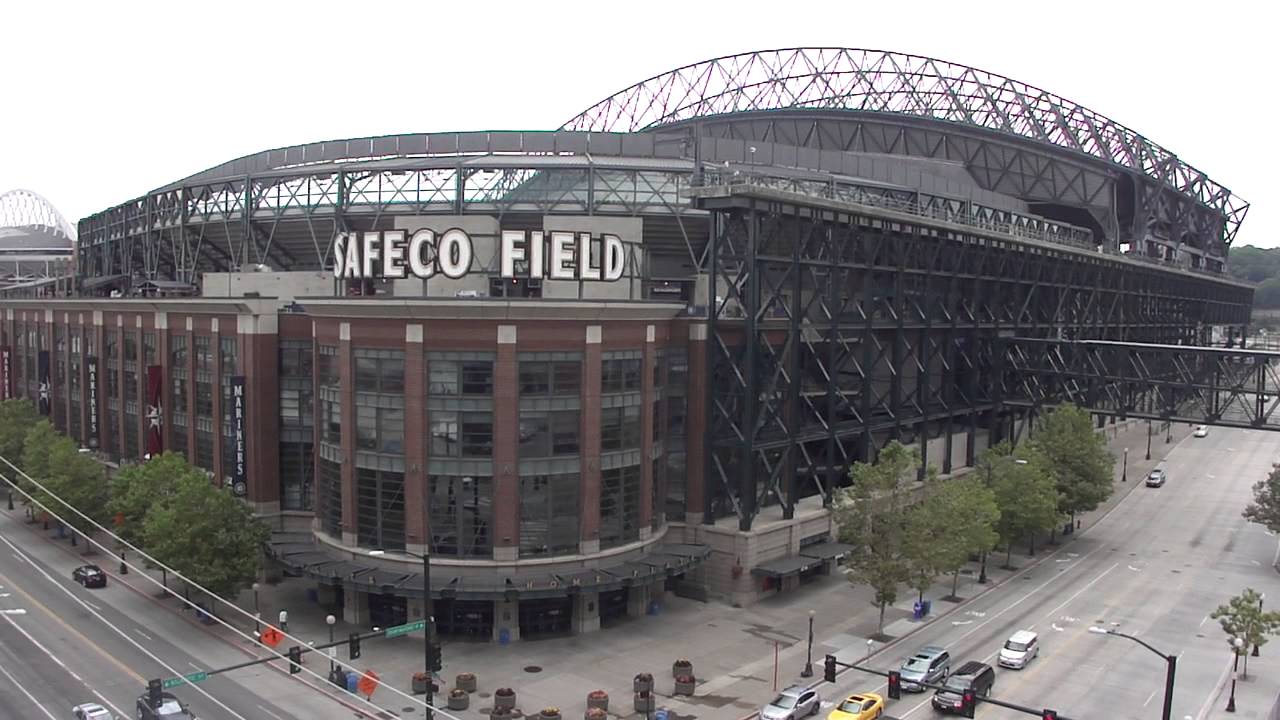
Many baseball fans don't remember but Safeco Field is the 4th Retractable Roof Stadium built for MLB Baseball.
The park is located in Seattle Washington and is home for the Seattle Mariners. Built in 1999, It was a replacement for the aging King Dome.
Named for the Seattle based owner, Safeco Insurance, they reportedly paid $40 million for the naming rights to the stadium for 20 years.
Safeco Field, like most ballparks built from the 1990s on, is a “Retro-Modern” style retractable-roof-ballpark. It incorporates many of the features of ballparks built in the 1970s. It features a brick façade, asymmetrical field dimensions, a natural grass field, spectator sight-lines suited for baseball, and surrounded by city streets and buildings.
But the building of this high tech marvel, like Miller Park, did not come without its own set of difficulties. On September 19, 1995, King County voters rejected subsidy taxes to build a new stadium for the Seattle Mariners Baseball Club.
Mariners Wants a New Stadium
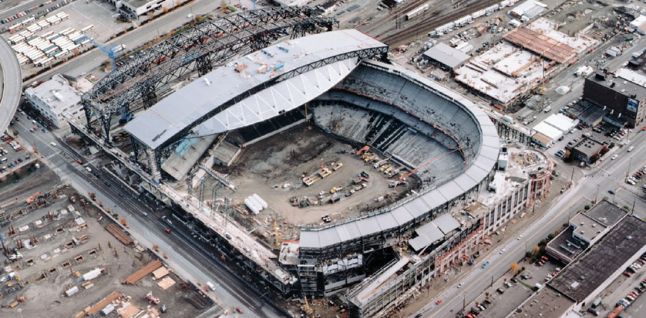
Beginning in the summer of 1993, owners of the Seattle Mariners expressed the need for a new baseball stadium. The Mariners were playing in the Kingdome, which also hosted football, concerts, and other special events.
The team owners felt that the Kingdome was not well suited for baseball. The artificial turf made fielding difficult, home runs were easier to hit, and some balls struck the structure. But public funding to benefit a private company met opposition, particularly when the price tag was in excess of $250 million.
The Mariner ownership, not happy with the tax payers rejection of the increase would turn up the heat and announced plans to sell the team and move it out of Seattle.
Then Washing State governor, Mike Lowry, called the state legislature into special session to help solve the problem. Firmly wedged between a Rock and a Hard Spot the Governor and King County devised a controversial solution that started a fire storm.
Safeco field construction
Head Fake
After three days of contentious debate, the legislature authorized King County to levy taxes to pay for bonds to build the stadium. A public facilities district was established to build and operate the stadium. In spite of the voters disapproval this new tax measure was approved in a different way.
On October 14, 1995, a special session of the state legislature authorized a different funding package for a new stadium that included a food and beverage tax on King County restaurants and bars, a car rental surcharge in King County, a ballpark admissions tax, a credit against the state sales tax, and sale of a special stadium license plate.
Nine days later, the King County Council approved the funding package and established the Washington State Major League Baseball Stadium Public Facilities District as owner the ballpark and to oversee design and construction, all without having to ask for tax payer approval. Taxpayer suits opposing the legislative actions were filed but the taxes failed in the courts.
The funding process for professional Baseball stadiums would be changed forever. We would see the same controversy rear its ugly head again with the building of Miller Park, the 3rd of this group of Retractable Roof Stadiums. We as tax payers and Baseball Fans, at least now, have a an opportunity to decide if we want to pay for the luxury and benefits that come from having a local Major League Ballpark, but that's an article for another page.
The Safeco Field Roof
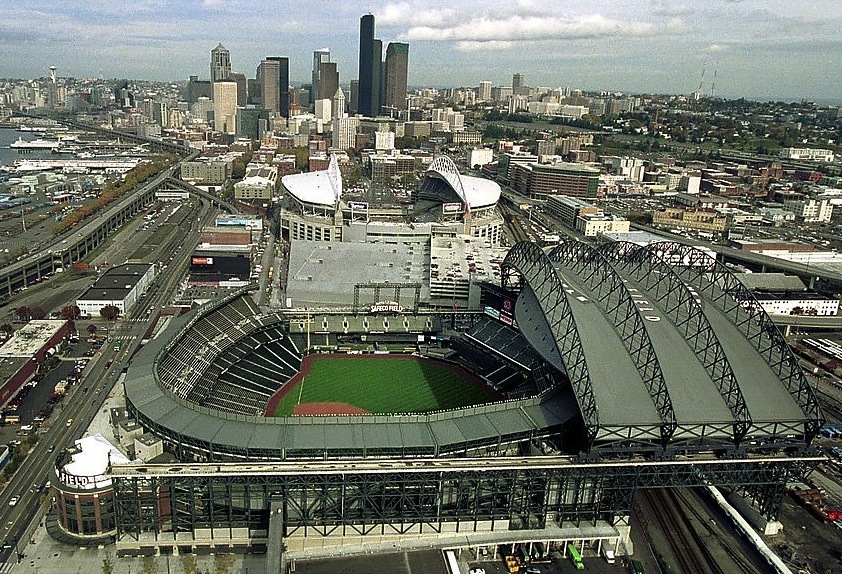
The Safeco Field retractable roof is unique to the others in that it serves as an “umbrella” for the stands and field rather than forming a complete climate-controlled enclosure. With Seattle being known for its healthy rain fall the umbrella approach in design was very appropriate.
Tim Newcomb from (Sports Illustrated) writes;
"Most retractable roofs serve to seal a building and guarantee an interior temperature, but in Seattle, the purpose of the roof was solely about protecting the field from rain. With that point in place, the umbrella-styled design let architects create more open areas to see in and out of the ballpark to let fresh air freely waft through the stadium and make the roof feel less like a hulking object.
Safeco Field may still have oceans of steel atop its seating bowl when the rain comes, but none of it feels dome-y. Instead, the field and fans stay dry, enjoy the natural temperature and can put the roof away when not needed. Just like they do with their umbrellas".
Tim Newcomb covers stadiums, design and gear for Sports Illustrated.
Most retractable roofs serve to seal a building and guarantee an interior temperature, but in Seattle, the purpose of the roof was solely about protecting the field from rain. With that point in place, the umbrella-styled design let architects create more open areas to see in and out of the ballpark to let fresh air freely waft through the stadium and make the roof feel less like a hulking object.
Safeco Field may still have oceans of steel atop its seating bowl when the rain comes, but none of it feels dome-y. Instead, the field and fans stay dry, enjoy the natural temperature and can put the roof away when not needed. Just like they do with their umbrellas. Tim Newcomb covers stadiums, design and gear for Sports Illustrated. Follow him on Twitter at @tdnewcomb.
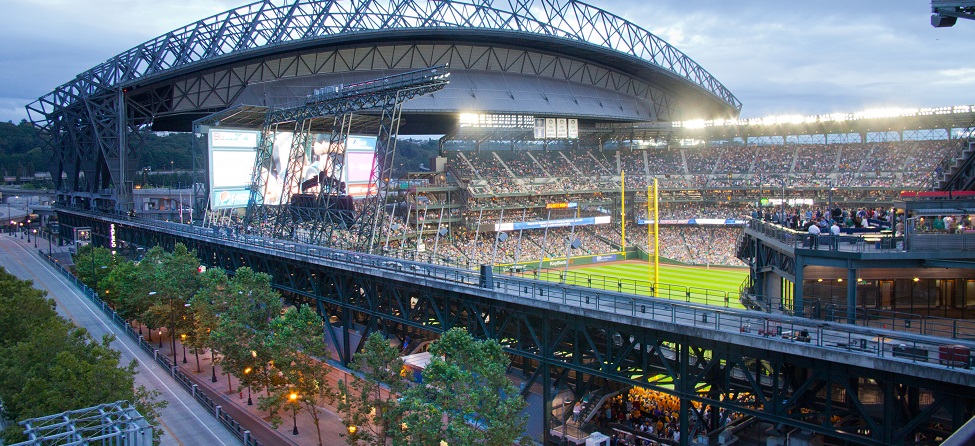 Image Credit; https://www.silvercloud.com/seattlestadium/local-area/safeco-field/
Image Credit; https://www.silvercloud.com/seattlestadium/local-area/safeco-field/Related Retractable Roof Stadiums
Miller Park
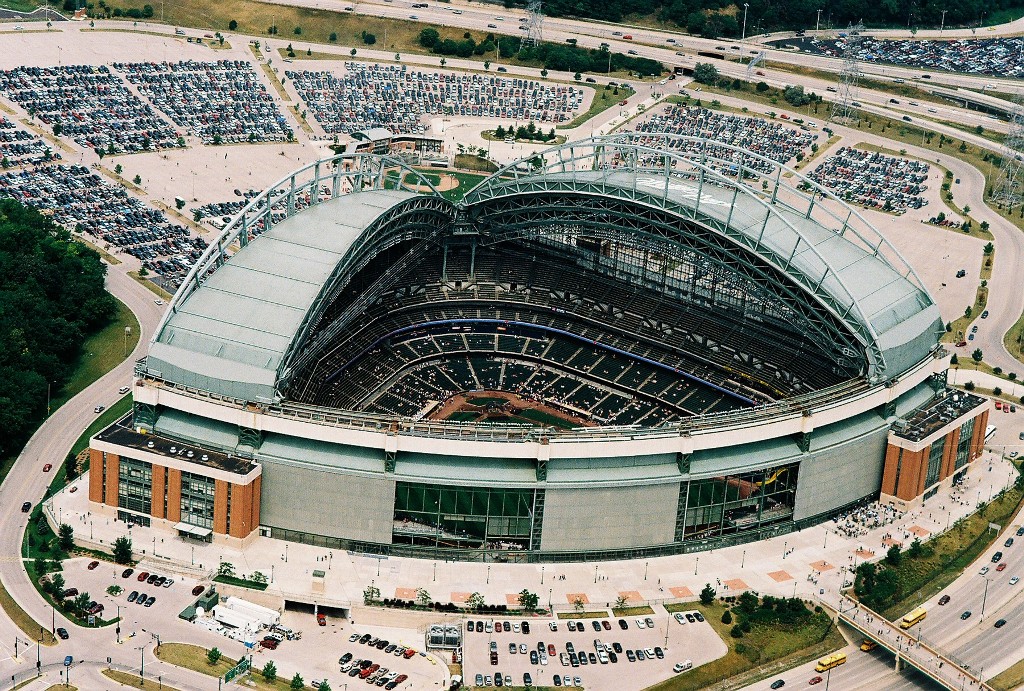
The 3rd Retractable Roof Baseball Stadium
Marlins Park
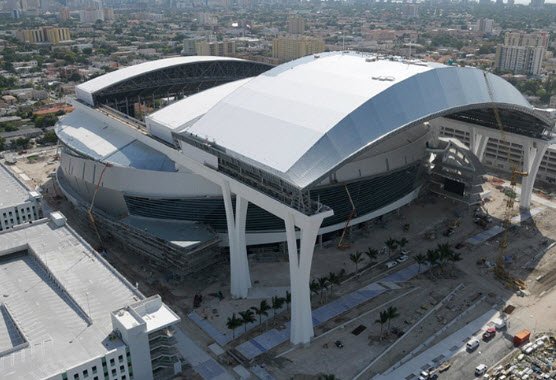
The 6th Retractable Roof Baseball Stadium
Retractable Field Stadiums COMING Soon
The concept is one of two visions that gave 360 Architecture the contract to design a new Atlanta Falcons stadium in downtown Atlanta. As it turned out, the final version is just an evolution of the first idea. The stadium will hold some 71,000 people (compared to 65,000 planned initially) and cost $ 1.6 billion (initially thought to be 1 billion).
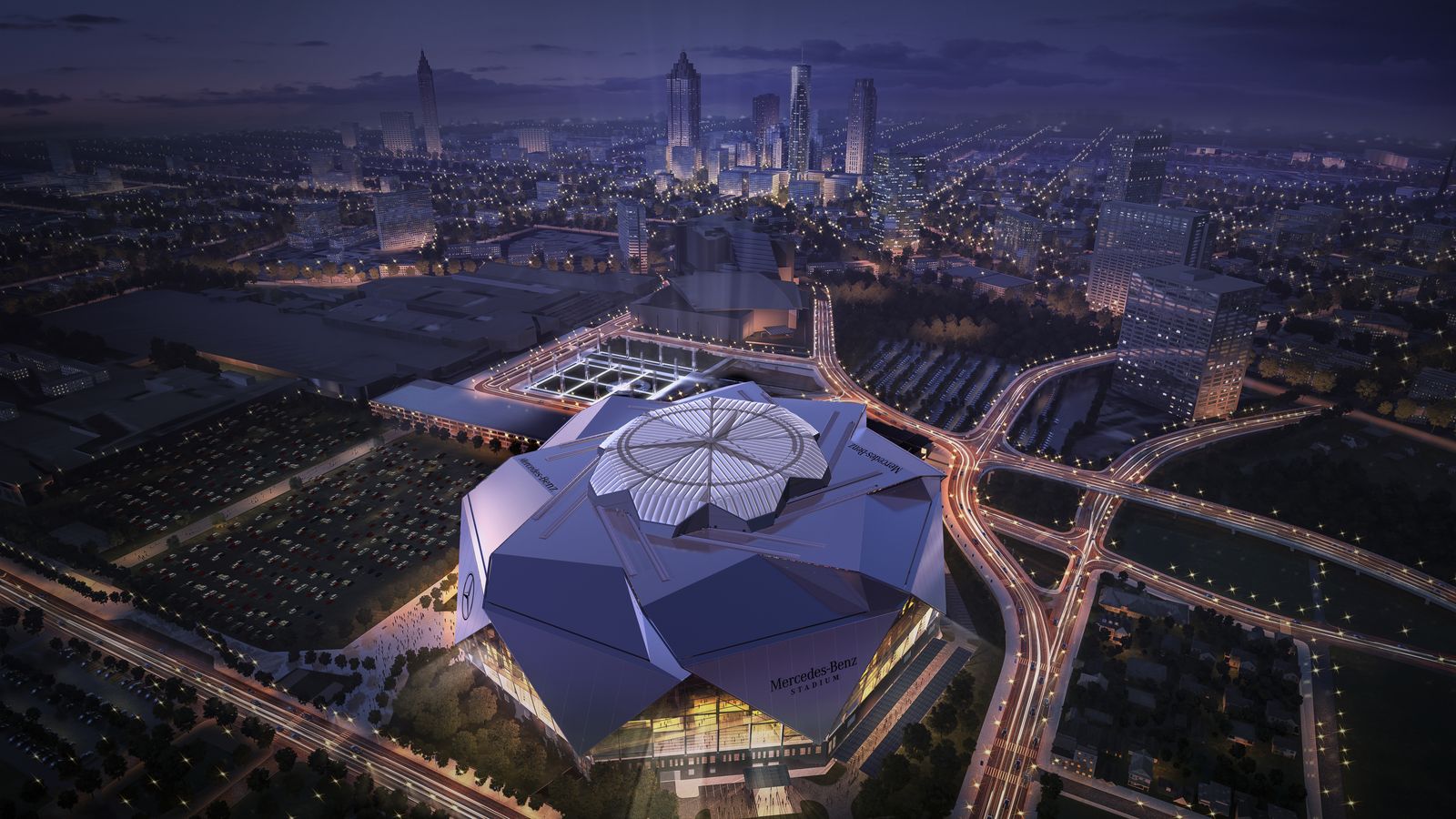 Mercedes Benz Stadium at night top closed.
Mercedes Benz Stadium at night top closed.Nicknamed by architects as the Pantheon, it seems to deserve the name. Connection with the Roman Pantheon is no accident here – independent petals of retractable roof structures may slide to create either a closed dome or a circular skylight above the centre of the field, just like in Rome. Of course each petal may also be located on the permanent roof to give the feeling of a regular stadium with only stands covered.

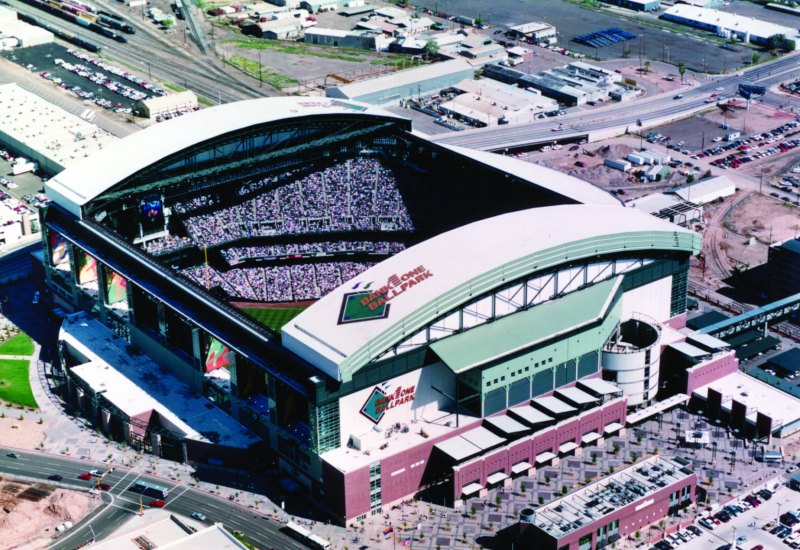
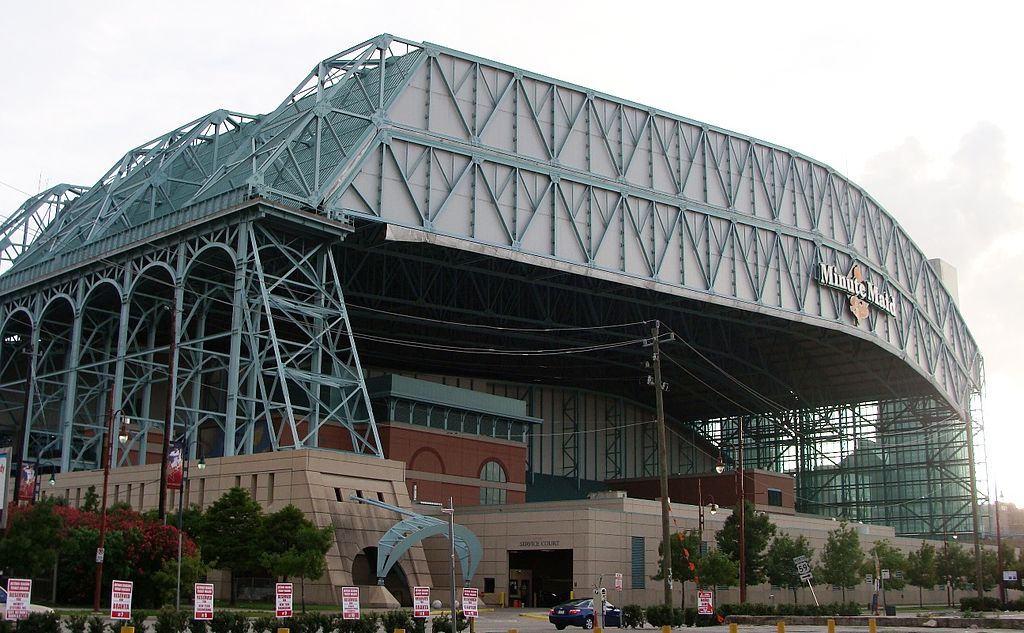
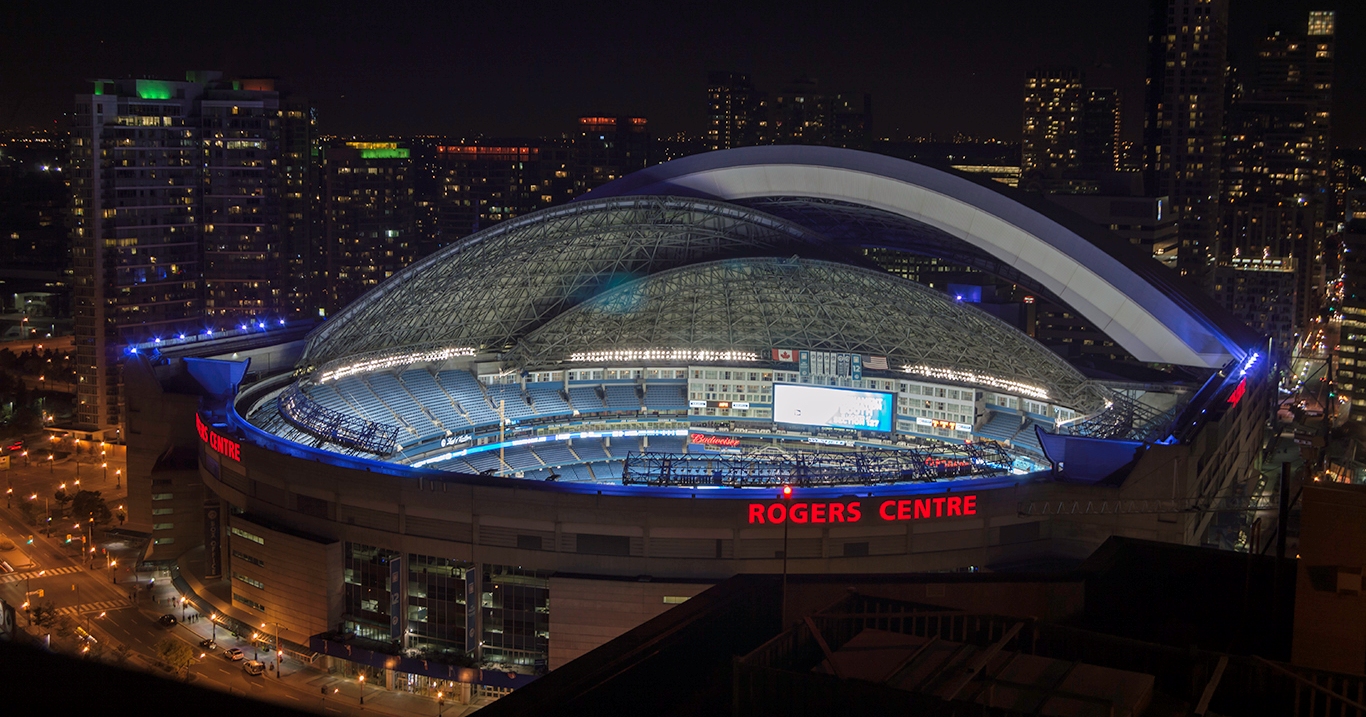
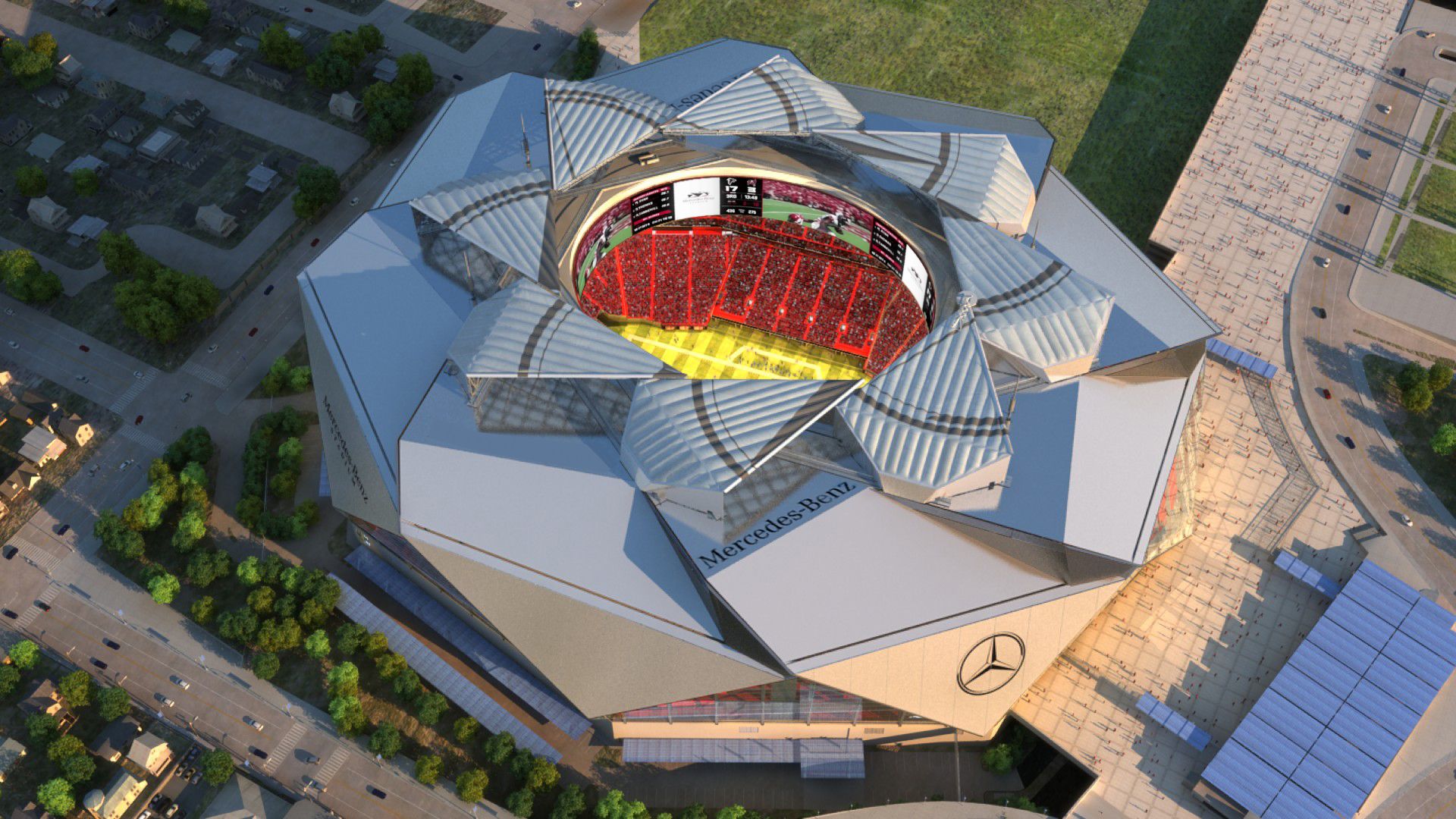
New! Comments
Have your say about what you just read! Leave me a comment in the box below.